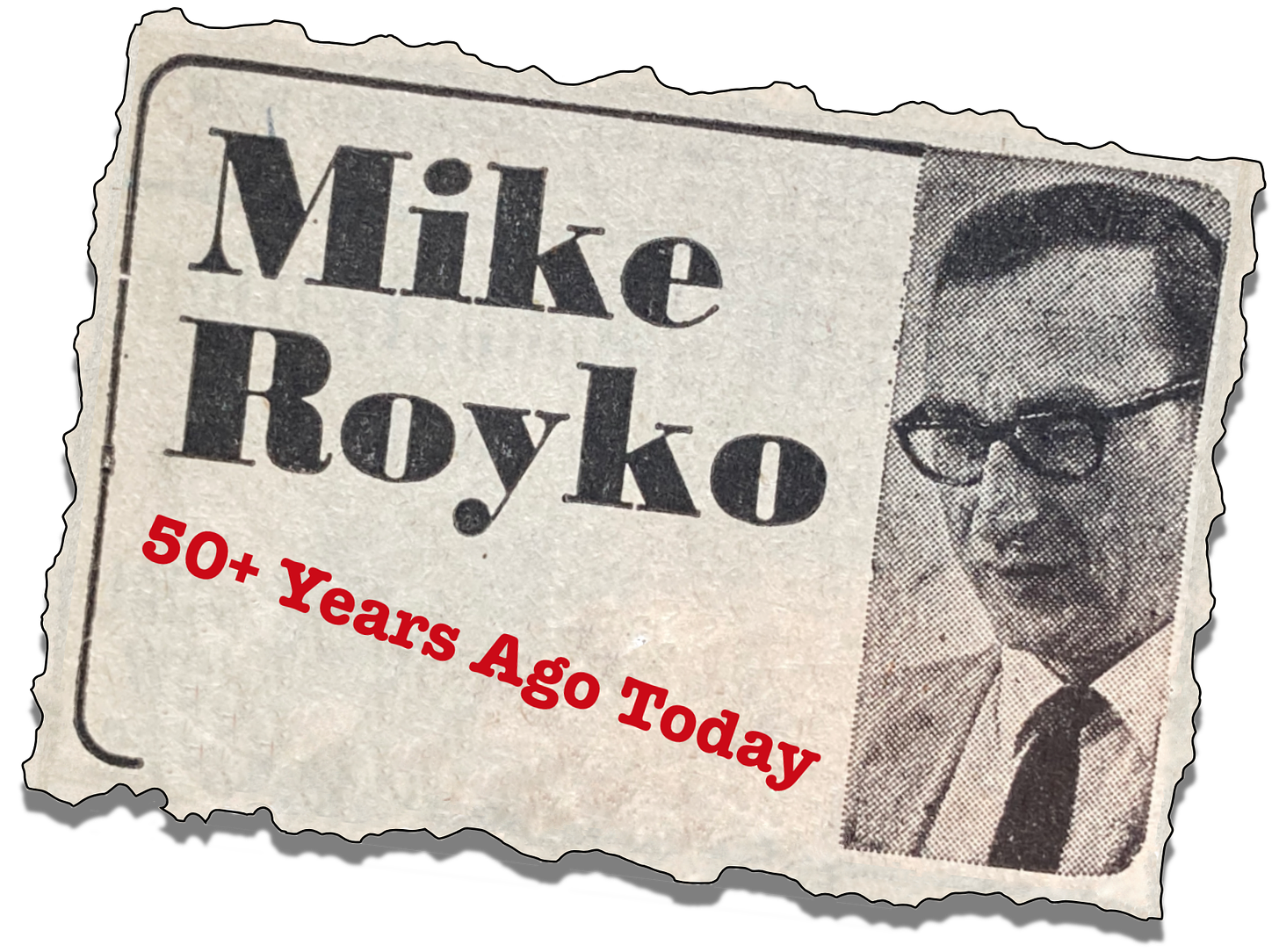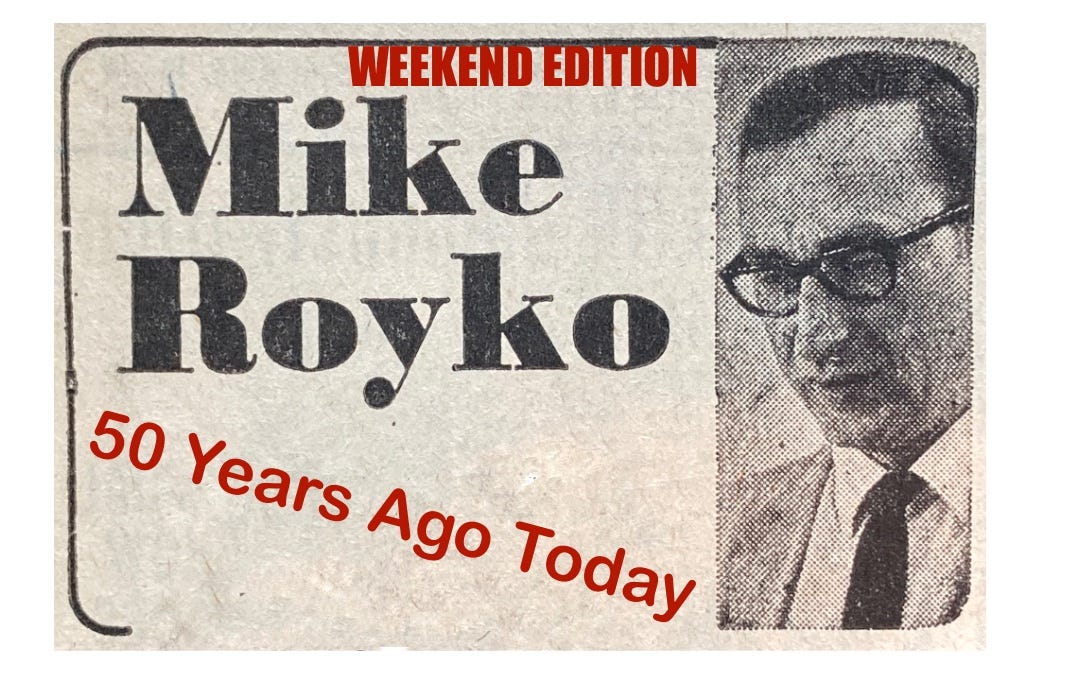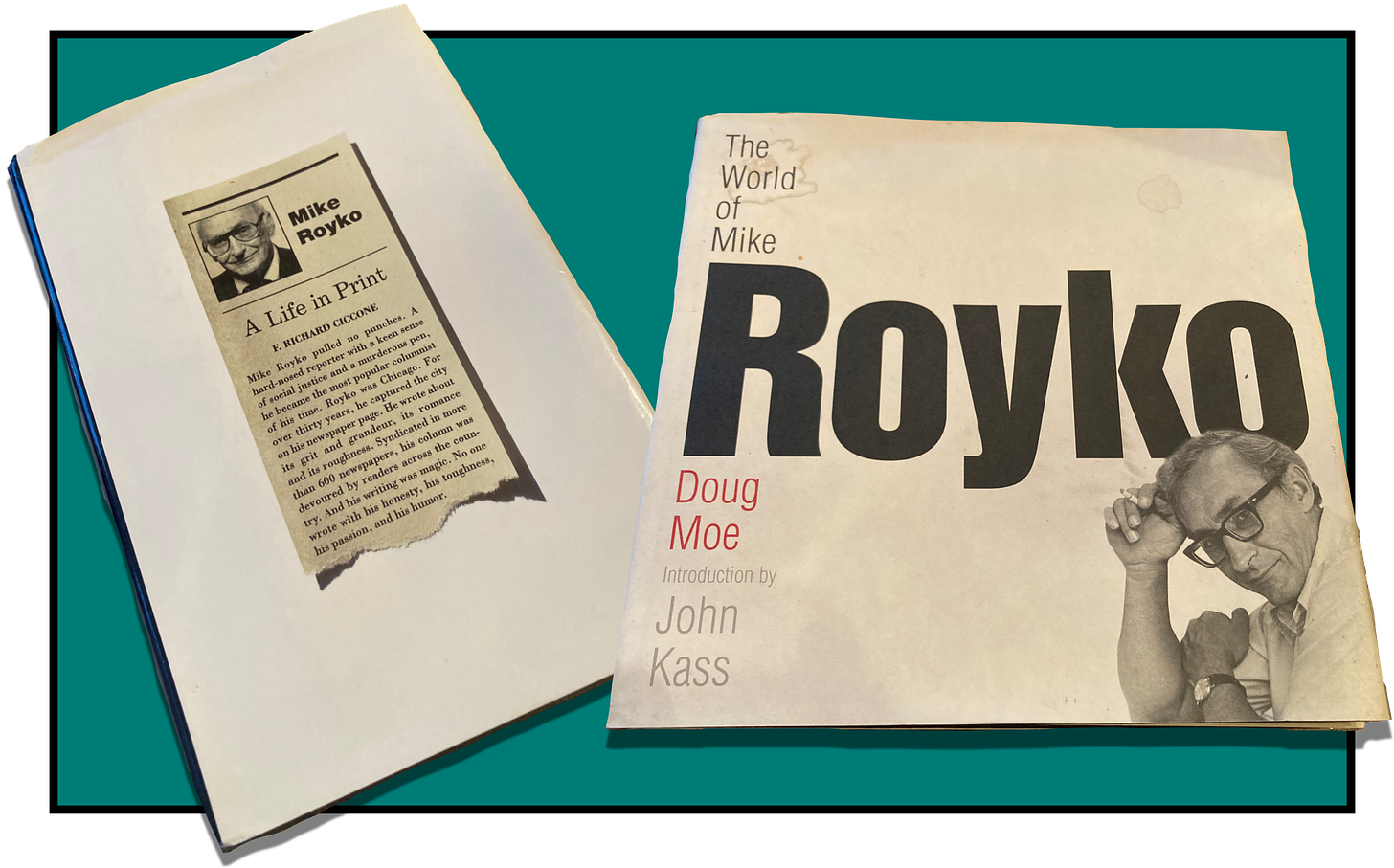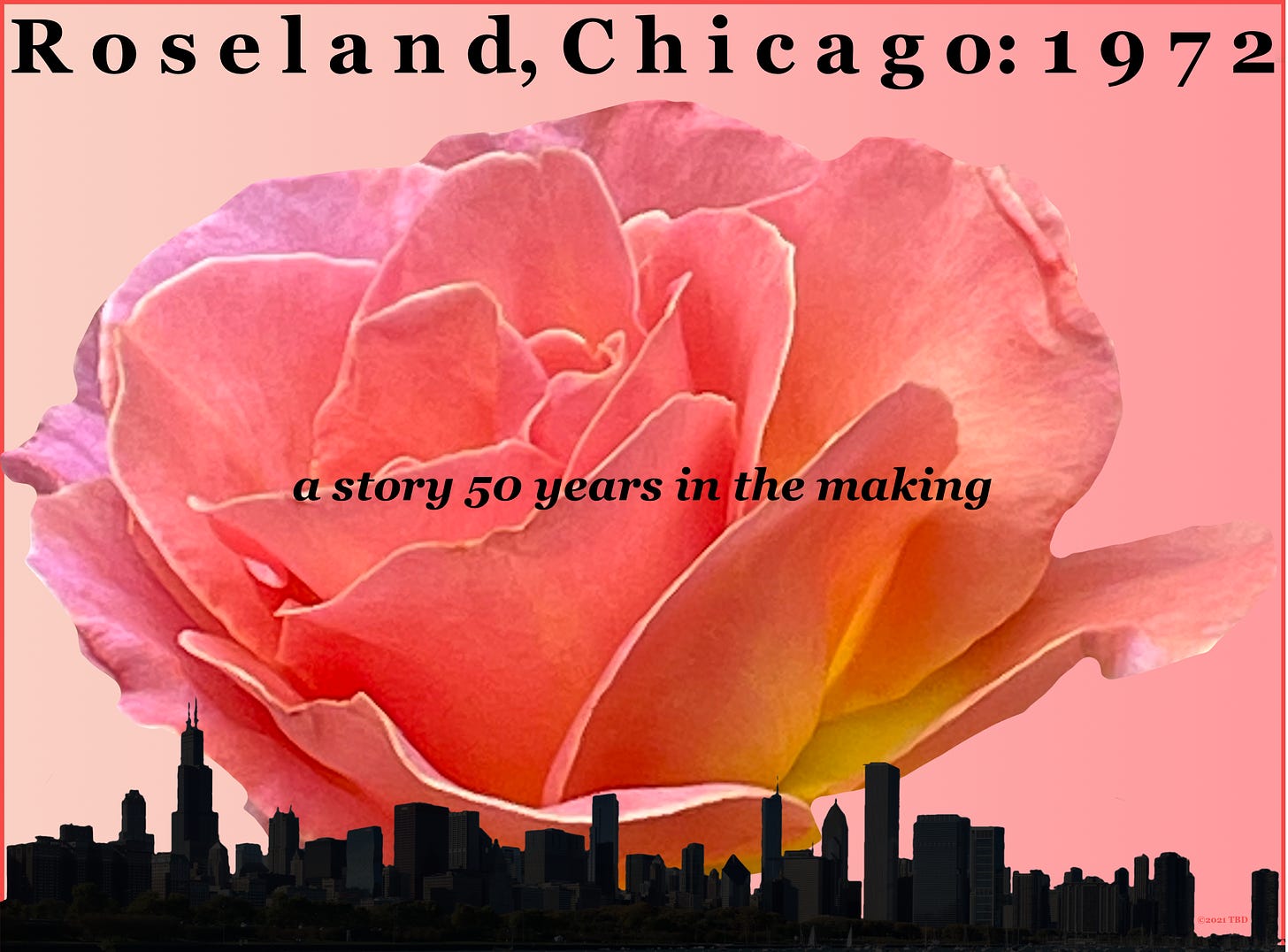Mike Royko 50 Years Ago Today: Who's that guy sitting in a rowboat tied to the Michigan Avenue Bridge all day doing nothing?
Weekly Compilation Oct. 8-10, 1971
To access other parts of this site, click here for the Home Page.
NOTE: This is the first post covering Mike Royko’s 1972 columns, week-by-week, by providing history and pop culture context so later readers can get all the references and jokes. Admittedly, we’re starting in 1971—to get a nice runway into our chosen year. To catch up on the news Mike is writing about here, consider also working through the year via THIS CRAZY DAY IN 1972—a week-by-week peek inside Chicago’s five newspapers of the time, starting here.
Why does a serialized book about 10-year-old Steve Bertolucci include posts about Mike Royko columns? Because 1972 was part of the ancient times when everybody read a newspaper. Everybody. Even kids read the paper. Not the boring parts, but still. Steve’s family read the Chicago Daily News, and that meant Mike Royko.
Picking up the front section of the Daily News and opening it to see Mike’s column in a long thin strip running down the inside of page three was a little bit like opening a present on Christmas morning. The anticipation as you flipped the page, looking for Mike’s picture…Steve always wondered what Mike was looking down at. Steve—the hero of the novel being serialized at the heart of this site— couldn’t decide if Mike liked what he was looking at, or if Mike was sneering at something.
In this feature, we aim to give you the political and pop culture background that Mike’s contemporaneous readers brought to his column just by being alive in 1972, along with the highlights of each column.
October 8, 1971: "Sitting pretty is a boring job"
Today is one of Mike's regular column of reader letters. Pat Sullivan of Chicago wondered what a guy sitting in a small motorboat tied up to the Michigan Avenue Bridge all day, every day, was doing.
Mike reported that John Vukasovic was acting as a lifeguard for workers repairing the bridge. Because arcane rules required an iron worker to do the job, Vukasovic was making $8.85/hr, and $17.70 for overtime. In 2021 money, that's $58/hr, $116 overtime.
Mike even spoke with John Vukasovic. Vukasovic complained that the job was OK for a couple of days, “but after that you go goofy.”
As Mike observed in closing, “Mr. Vukasovic wouldn’t make much of an alderman, with that attitude.”
October 9-10, 1971
Everybody Steve knew in Roseland in 1972 got a newspaper delivered to their house, every day. It landed on the front porch, the sidewalk, or in the evergreen bushes. Different families got different papers, which said a little about them.
Steve’s family was a Daily News family, which as we noted earlier, means they were a Royko family. Mike was the funniest guy in the city, so what could be better? But there was something sad about weekends in any Daily News household: Mike Royko wasn’t in the Daily News’ single weekend edition.
The worst part, Steve found, was how often you forgot. You’d grab the Daily News front section, turn to page 3 and--no Mike looking slyly down the page from his little black box. Instead the regular newspaper type flowed down the page, suddenly looking like hieroglyphics, all meaning gone without Mike’s picture on top.
So there's no Royko column to quote for weekend editions of this item. Instead, we’ll quote Mike’s column from different years; pull from the terrific biographies by F. Richard Ciccone (sadly deceased) and Doug Moe; and gather current reminiscences of Mike from people who knew and loved him.
Let’s start by saying, again, that Royko was not in the paper on weekends. Mike took off weekends, so what? But as Ciccone notes, when Mike started skipping Mondays too in the early ‘90s, that simply meant that for the first time in over 30 years, he had Sundays off.
Writing a usually deeply-reported column for a major newspaper is nothing like dashing off opinions to a website or social media and hitting send, then or now. It’s work, hard work, and newspaper people can and do get fired if they screw up enough. Your job is on the line.
To put Mike’s work in context for a post-20th century, social media world, I guess the only way to put it is: A newspaper column really meant something in 1972. There were a handful of people in the country, let alone any city, who got their picture in the paper on top of a regular column.
The magnitude of the honor and responsibility is hard to fully appreciate now when everyone has their selfies plastered all over Instagram and their opinions sprawling across the internet.
Mike wrote five days a week, only pulling back to four days in his 60s. As Ciccone wrote, “Four columns a week is a monumental load, but Royko always resisted it because he was so proud that he had written five columns a week for thirty-plus years while his peers often did only one or two.”
It wasn't fun and games, even for someone as talented as Mike Royko. Perhaps because he was so talented. Royko hated morning, Ciccone explained. “Some mornings he was hungover. Every morning he was facing the demon of the column.”
Let's end with Ciccone quoting veteran Chicago reporter Hanke Gratteau: “He paid a great price. Everyday it had to be good. Everyday it had to be important to everyone. Everything else had to come second. The family had to come second. His health had to come second.”
Again, those excellent biographies are "Royko: A Life In Print" by F. Richard Ciccione, and "The World of Mike Royko" by Doug Moe. I could link to Amazon for those titles, but if you would like to buy the books, it would be great if you could buy them from an independent bookseller.
The Michigan Avenue Bridge was renamed the DuSable Bridge in 2010 after Jean Baptiste Point DuSable, the first non-native settler in what would become Chicago. DuSable built a cabin in 1780 just east of the Wrigley Building, or as we would say now, across Michigan Avenue from the Wrigley Building. But in 1971, it was still the Michigan Avenue Bridge.
By the way, this feature is no substitute for reading Mike’s full columns. He’s best appreciated in the clear, concise, unbroken original version. Mike already trimmed the verbal fat, so he doesn’t need to be summarized Reader’s Digest-style, either. Our purpose here is to give you some good quotes from the original columns, but especially to give the historic and pop culture context that Mike’s original readers brought to his work. You can’t get the inside jokes if you don’t know the references. Plus, many columns didn’t make it into the collections, so unless you dive into microfilm, there are some columns covered here you will never read elsewhere. If you don’t own any of Mike’s books, maybe start with “One More Time,” a selection covering Mike’s entire career and including a foreword by Studs Terkel and commentaries by Lois Wille.
Do you dig spending some time in 1972? If you came to MIKE ROYKO 50 YEARS AGO TODAY from social media, you may not know it’s part of the book being serialized here, one chapter per month: “Roseland, Chicago: 1972.” It’s the story of Steve Bertolucci, 10-year-old Roselander in 1972, and what becomes of him. Check it out here.
To get MIKE ROYKO 50 YEARS AGO TODAY in your mailbox weekly along with THIS CRAZY DAY IN 1972 and new chapters of the book—
SUBSCRIBE FOR FREE!









